
If you are like most people, you have had low back pain at some time in your life. It is the rare person who has never experienced lumbago. For what it’s worth, statistics say that one in every eighteen people walking this earth is suffering from some degree of low back pain every day. And one out of every six people has had an incidence of low back pain within the last month—that’s a lot of sore backs. Here’s the kicker: If you have been lucky enough to escape low back pain, then just know your chances of experiencing some form of it in your lifetime is an astounding seventy percent! Think it won’t be you?
So what do you do when that moment of excruciation and anxiety strikes? Do nothing and simply wait it out? Will you seek help; and if so, where will you go? Those are the questions I will attempt to answer within the next few paragraphs, because, if you are like most people, you are probably reading this in pain right now: You’ve got low back pain, you’ve hoped it would go away on its own, and it hasn’t; and now you’re desperate. Read on.
What Causes Low Back Pain?
There are many causes of low back pain—far too many to go over all here. But for all intents and purposes we can separate them into three groups—organic, mechanical, and neurological causes. Each type requires different treatments, and has varying degrees of clinical immediacy—that is, how quickly it needs to be addressed. The most pressing emergencies are generally organic, but a few neurological problems are bad enough to require prompt attention.
Organic Causes of Low Back Pain
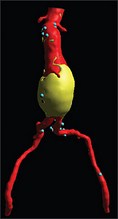 I will not go over every organic cause of low back pain here. What I will do is describe emergency situations and give you some things to look out for. It is very important that you understand the conditions I go over here will require you to seek immediate medical attention. If you are experiencing these signs and symptoms, don’t mess around—get to the emergency room right away. I will not go over every organic cause of low back pain here. What I will do is describe emergency situations and give you some things to look out for. It is very important that you understand the conditions I go over here will require you to seek immediate medical attention. If you are experiencing these signs and symptoms, don’t mess around—get to the emergency room right away.
Low back pain can be caused by cardiovascular problems. That’s right, your heart and blood vessels might be the reason your lower back hurts, particularly if you are in the throes of an abdominal aortic aneurism (AAA). AAA is the swelling of the aorta. Tears in the interior of this massive artery can lead to blood filling in between the tissue layers of the blood vessel walls. As the tissue swells, it can eventually burst causing death. This is a medical emergency. Although many people with AAA have no symptoms when the aneurism is discovered, some people develop symptoms, and they include low back pain, abdominal pain and groin pain. The most unsettling sign, however, is a throbbing, pulsating mass in the abdomen. If you have low back pain and a palpable pulsation in the abdomen, get to the ER immediately.
Low back pain can also come about from digestive problems. Gas and bloating are common ailments affecting the low back. Less common is cramping caused by diarrhea, but nevertheless, painful. Cramping can be due to food sensitivities (lactose intolerance, Celiac disease, and Crohn’s disease), intestinal infection, and parasites. None of these are medical emergencies, though. The digestive issue that does have immediacy is appendicitis. Appendicitis is an inflammation of the appendix; it’s painful. I’ve had it and it’s no fun.
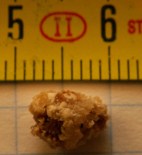 Genitourinary problems can also cause low back pain. The one we hear about most often is kidney stones. These tiny little uric acid crystals form in the kidneys and can be passed into the ureters, the tubes that carry wastes from the kidney to the urinary bladder. As small as kidney stones can be, the lumen or opening of the ureters is much smaller. You don’t have to be a physicist to guess what happens when a larger object tries to pass forcefully through a smaller hole. What isn’t so obvious is where the pain is felt when kidney stones pass. You’ve got it—the low back. Low back pain associated with kidney stones is excruciating. Genitourinary problems can also cause low back pain. The one we hear about most often is kidney stones. These tiny little uric acid crystals form in the kidneys and can be passed into the ureters, the tubes that carry wastes from the kidney to the urinary bladder. As small as kidney stones can be, the lumen or opening of the ureters is much smaller. You don’t have to be a physicist to guess what happens when a larger object tries to pass forcefully through a smaller hole. What isn’t so obvious is where the pain is felt when kidney stones pass. You’ve got it—the low back. Low back pain associated with kidney stones is excruciating.
Nephrolithiasis (kidney stones) is a medical emergency, as the stones can create a complete obstruction, which can ultimately lead to infection or kidney damage. Another sign to look out for is waves of pain. These waves are called renal colic, and are the body’s way of trying to push the obstruction out. The body is intelligent, yes indeed; and so are you—so get to the emergency room, pronto.
Finally, a urinary tract infection (UTI) can cause low back pain. If you feel like having to pee all the time but can’t; if you are urinating fire; if you feel bloated; if you are cramping in the low back or pelvis; if you have foul smelling, cloudy, or bloody urine; if you have fever—then you may have a UTI. With a urinary tract infection, you may have one of these symptoms or you may have them all—get to your doctor or the ER right away.
There are some basics that you should know which will help you determine whether to run to the ER or wait to see your chiropractor. When evaluating your low back pain, it is important to observe the following. If you experience,
- severe pain that is constant and unrelieved by position (lying flat on your back, sitting, lying on your side with a pillow between your legs, etc.),
- fever and/or vomiting along with back pain,
- pain that wakes you up, and keeps you up, at night,
- or bowel or bladder problems, such as losing control of going to the bathroom,
then visit the emergency room right away.
Mechanical Causes of Low Back Pain
So, hopefully, you are not dealing with an organic cause of your low back pain. If your pain is mechanical—that is, involving the joints, muscles or tendons—then it will likely change with position or movement. In other words, mechanical causes of low back pain generally increase or decrease as you alter activities. For instance, the pain might be worse upon waking up and getting out of bed, but improves as you walk around a bit; it might also be worse with prolonged sitting. Bending forward can aggravate low back pain, while some people need to stay flat on their backs with very little movement at all. What ever the case may be, mechanical causes of low back pain usually need mechanical solutions.
Subluxations
The first mechanical cause of low back pain is a non-moving, stuck joint. My Los Angeles, Beverly Hills and West Hollywood chiropractic clients know exactly what this condition is called—a subluxation. Subluxations are stuck joints. They prevent proper movement, while causing muscle spasms, inflammation, and irritating sensitive nerves.
Subluxations are painful. Many cases of chronic low back pain are due to unaddressed subluxations. Chronic subluxations can lead to the development of degenerative arthritis—a painful inflammatory condition where the spinal disks wear away and ultimately cause spinal fusion.
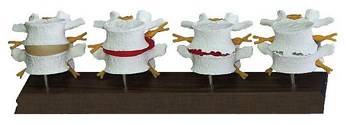
Because chiropractors are the only doctors that detect and correct subluxations, you pretty much have to see one to get fixed up. Some common attributes of low back subluxations are pain on sitting, pain on bending forward or backward, pain when going from lying to sitting and from sitting to standing, and pain not relieved by non-steroidal anti-inflammatories (NSAIDS).
Subluxations rarely, if ever, open up on their own. Like I said, they are the cause of many long-standing episodes of low back pain. An interesting phenomenon regarding chiropractic and low back pain is that chiropractors have historically been the last resort doctors in a patient’s repertoire. What this means is that it’s not uncommon for people to come to chiropractors after they have tried everything else, to no avail. That’s quite all right—as long as people come eventually. Once again, chiropractors are the only doctors to correct subluxations.
Muscular Causes of Low Back Pain
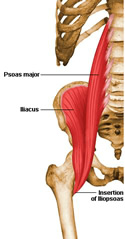 Ah yes, many muscular conditions can cause low back pain. Muscle strains happen…but not as much as people think. Spasms come along with subluxations, but they can stick around long after the subluxation has gone. Trigger points are also dreadful players in the low back pain game. But by far the most common muscular issues involved in low back pain are muscular imbalances. Ah yes, many muscular conditions can cause low back pain. Muscle strains happen…but not as much as people think. Spasms come along with subluxations, but they can stick around long after the subluxation has gone. Trigger points are also dreadful players in the low back pain game. But by far the most common muscular issues involved in low back pain are muscular imbalances.
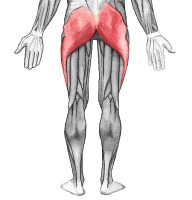
Muscular imbalances are when one muscle (or group of muscles) gets very tight, while another muscle (or group of muscles) gets very weak. The muscles are usually antagonists, meaning they usually do the opposite action. A perfect example is tight hip flexors (iliopsoas) along with weak glutes (gluteus maximus). When the glutes get weak, the low back becomes less stable. Throw in a very strong, very tight muscle that throws the back into an arch, and what you have is a recipe for disaster. Take a look in the mirror: if you see an excessive arch—muscular imbalance is at least one of your low back problems.
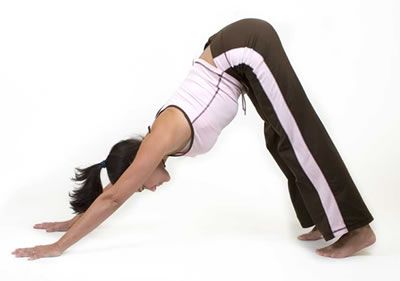
Tight muscles are easily remedied by stretching. In fact, my chiropractic patients in Los Angeles, Beverly Hills and West Hollywood know very well that I’m a huge advocate of stretching. Although a yoga class will do wonders for opening your tight areas (as well as strengthen your weak areas), if you are in the throes of a low back pain episode, you will probably need to get your problems evaluated and treated ASAP. In other words, who’s got the energy for a yoga class when you’re writhing in pain? I understand this, and you can be sure to get your muscular imbalances assessed, all while having your back treated, in my Los Angeles sports chiropractic practice.
Low Back Pain Can Come From the Feet
So mechanical causes of low back pain that results from joint and muscle problems might be obvious, but less obvious is that some people have issue with their feet that can also be where low back pain originates from. The feet being the foundation of our mechanical locomotor system (our wheels) have an enormous impact on our movement, and ultimately, on how we feel. Foot dysfunction, like over-pronation or over-supination, is usually the turning inward or outward of the feet when we walk. Other names for these dysfunctions are flat feet and duck walking.
When the feet lack stability so that they move excessively as we walk (particularly stepping down and pushing off), they can cause mechanical dysfunction in the low back and pelvis. Excessively firm feet are not good either; and both conditions—instability and inflexibility—can cause low back pain, along with other problems. In these cases, it is imperative that one gets their feet checked by a professional. Podiatrists can do it, and so can orthopedists. But the best place to go for a comprehensive foot examination is your local neighborhood chiropractor. Chiropractic offices are superior for assessing foot dysfunction and gait (how you walk) simply because they can also help you relieve your back pain, check you for muscular imbalances, and cast you for orthotics, if necessary.
Orthotics are custom-made inserts that fit into the shoes. A chiropractor will cast you in plaster or have you step into foam slippers. In my West Hollywood and Beverly Hills chiropractic sports office, I choose plaster casting because I know it’s superior. Casting in plaster allows the foot dysfunction to be corrected in the neutral position and doesn’t have recreating the flatness or overarch when you step down in the foam.
Orthotics are miraculous devices that can end chronic back pain within days. You will still need to have your subluxations adjusted and your muscular imbalances corrected, but orthotics are incredible at supporting the chiropractic care. I am a flat footed over-turner when I walk, and I also had chronic low back pain, until I started wearing orthotics regularly. I highly recommend any low back pain sufferer to get their feet checked, as orthotics have changed my life.
One other thing orthotics are great at is helping prevent a disastrous condition, which is without a doubt the toughest condition I see in my Los Angeles chiropractic office—the herniated disk.
Herniated Disks
The spinal bones (vertebrae) are separated from each other by a firm yet spongy disk. The intervertebral disk is made up of fibrocartilagenous material. The outer annular rings are fibrous and tough, while the inner nucleus is soft and spongy. The nucleus moves within the annular fibers as we move. If the annular fibers weaken, they can tear. Torn annular fiber no longer hold the nucleus in the center, and the nucleus can then push outward from the disk compromising the spinal nerves. Bulging disks are called herniations. Disk bulges are painful in and of themselves, but when the bulge presses up against a nerve, it can be unbearable.
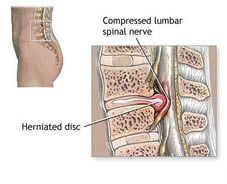 
A typical symptom of a herniated disk is severe low back pain on all movements that may have the sufferer bent over and unable to stand on his or her own. I’ve had people carried into my office when suffering from a bulging disk. If the herniation is bad enough, the sufferer can lose control of his or her bladder or bowels. If this happens, it’s a medical emergency, and a trip to the ER is warranted.
If a nerve is involved (pinched nerve), the person can feel sharp electrical pain in the low back, the buttocks, or down the leg. This is called sciatica. Sciatica can prevent the sufferer from walking, it can cause a limp, or it can make sitting in one position impossible. If you have low back pain that feels centrally located on the spine, press lightly into the area; if you want to scream, or your legs buckle, then you may have a herniated disk. Getting into a chiropractor immediately is essential. Herniated disk are the one true chiropractic emergency—don’t hesitate.
Neurological Causes of Low Back Pain
We have discussed how disc herniations can press upon or pinch a nerve. Nerves can be irritated in other ways too. For instance, spinal subluxations can irritate nerve tissue in the absence of a herniation. Tight muscles can also impinge nerves in the low back region, in the front groin and thigh area, and in the buttocks. A painful condition known as piriformis syndrome is a spasm of the piriformis muscle, which sits right on top of the sciatica nerve. Pregnant women are familiar with this sensation as it’s quite common among expecting mothers. Piriformis syndrome is no fun, but it’s treatable. I treat many people suffering from piriformis syndrome in my West Hollywood and Beverly Hills chiropractic office.
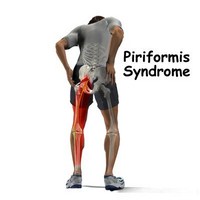
Another condition that can irritate nerve tissue as it exits the spine is spinal stenosis. Stenosis is the narrowing of an opening, so spinal stenosis is the closing off of the foramen or openings from which the nerves exits. Central canal stenosis is a type of spinal stenosis where the actual opening for spinal cord narrows. This is a dangerous situation and requires the help of a neurosurgeon.
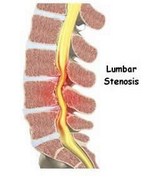 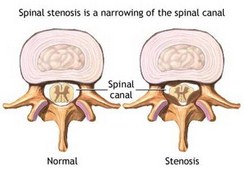
One final note on sciatica: If a disk herniates such that the nucleus squirts out of tissue completely, this is a serious condition. Typically, there is no low back pain, but an excruciating pain in the leg. The pain can be almost anywhere, but typically it is felt down by the ankle at the front of the shin. Let me tell you, this is a painful and unnerving situation. A neurologist can give you a steroidal injection to deaden the immediate pain, but it is imperative that chiropractic and physiotherapy be taken up immediately following the shot to correct the actual problem. The effects of the shot won’t last forever, but it should buy you enough time to get working on the problem. I’ve treated several people in this situation and we have had great success. A small minority of these patients will need surgery, and for this a neurosurgeon is necessary.
Treatment Options for Low Back Pain Sufferers
So you are having low back pain—what should you do? The first bit of advice is to do something. Doing nothing and hoping the pain will go away on its own, despite some current medical advice to that effect, is not only foolish, it’s masochistic. I have encountered people in my Los Angeles chiropractic practice that have lived with their low back pain for twenty or more years. Believe me—the pain is not going to go away on its own.
If you do seek the care of a professional, you have the following options: If you see a medical doctor, you will be in the best position to evaluate whether you have an organic condition. This is important if, in fact, your low back pain is coming for your cardiovascular, digestive or urinary systems. If, however, your low back pain is due to mechanical causes, then the medical approach is quite limiting.
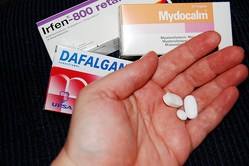
The modern medical approach to mechanical low back pain is often quite simple. Most low back pain sufferers are given the medicinal triad of pain killers, anti-inflammatories, and muscle relaxants. Although in some cases, this regimen can help reduce the pain for the short term, many people report no improvement on that selection of treatment. Returning to the medical doctor at that point might get you a referral to a physical therapist, which is definitely a better long-term option, but can also be limiting.
A physical therapist (PT) will likely do therapeutic modalities, like heat, electric stimulation, some muscle work (if you are lucky and find the right practice), and give you exercises (which is the right thing to do). Treatment may go weeks or months, and I’ve even heard some patients speak of PT care lasting six month or longer. Doh!
Chiropractic Care to Relieve Low Back Pain
If you choose a chiropractic office—and if you are in Los Angeles, Beverly Hills or West Hollywood, then you should check out my sports chiropractic office—you will get your spinal subluxations adjusted, your muscles relieved through deep tissue massage, stretches, and exercises; and you can get your feet checked and be cast for orthotics if that is indicated. In a chiropractic office, you will have the greatest chance of getting the full spectrum of care necessary to give your low back some relief. Chiropractors can do therapy and rehabilitation—a big plus when dealing with acute or chronic low back pain.
I have been in the sports chiropractic business helping people heal from low back injuries for nearly ten years. I have had thousands of people walk through my doors (some have crawled) and get long-term solutions to their low back pain problems. I have also had my fair share of low back pain (hey, chiropractors have low backs, too), and for my money, the quickest, most effective way to deal with low back pain is through safe, effective chiropractic care. Don’t hesitate, call your chiropractor today.
-March 31, 2009
*NOW AVAILABLE
The Six Keys to Optimal Health by Dr. Nicolas Campos
For More Advice on Health and Optimal Living Read
The Six Keys to Optimal Health by Dr. Nicolas Campos

|

















